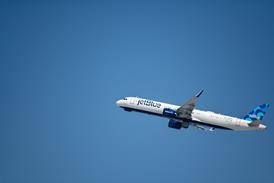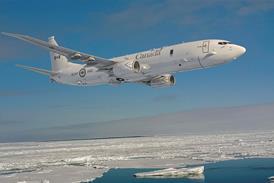Swift Engineering is known for race car designs more than prototype aircraft, but with its successful role designing and building a concept jet for Eclipse Aviation has made a bold leap into the aerospace market.
The company that now aims to fill a niche role as a rapid prototype shop for all-composite airframes, encroaching on a market all but cornered for several years by Scaled Composites.
However, Scaled Composites founder Burt Rutan has turned his chief focus to developing a fleet of manned spacecraft for Sir Richard Branson's Virgin Galactic venture, and he is also awaiting federal approval for a Northrop Grumman takeover bid. Both developments appear to create an opportunity for new companies to enter the market.
"We've been approached by a lot of people who were told 'no' by Scaled," says Mark Page, Swift's chief engineer. "They're real busy with the rocket."
Swift has previously been known in aerospace circles for a concept for a swarming, flying-wing family of tactical unmanned air vehicles called Killer Bees, which has attracted impressive interest from aerospace contractors, but, as yet, no firm orders. An initial partnership with Northrop Grumman Integrated Systems was dissolved, and the company is now teamed with Raytheon Missile Systems to offer Killer Bee for a joint contract for the US Navy and US Marine Corps for a small tactical unmanned aircraft system/tier II (STUAS/Tier II) requirement.
That project has been postponed nearly a year to launch in mid-fiscal year 2008.
The Killer Bee and ECJ projects grew out of the company's 24-year history in the automotive racing business, where it has built 500 cars and helped design Toyota racers. Its facilities include aerodynamic windtunnels and autoclaves for composite materials, and one-third of its engineering staff coming from aerospace companies.
Swift's stature in the aerospace industry rose dramatically with the unveiling of the V-tail ECJ at the AirVenture show in Oshkosh, Wisconsin, in late July. Eclipse founder Vern Rayburn introduced the jet, indicating that he had contracted with Swift to assist with designing and building the aircraft.
"We needed a proven aerodynamics expert to aggressively drive this new initiative forward while we stayed focused on our core business of ramping up Eclipse 500 production and deliveries," Rayburn said at Oshkosh. "Swift made it happen in record time, and the result is a very innovative idea for an aircraft."
Eclipse first contacted Swift about the project in late December 2006, Page said. Eclipse defined the aircraft's performance requirements and specified a few design features, such as the use of the Eclipse 500 wing assembly. But Rayburn, who was one of only four Eclipse employees aware of the new project, left the design work to Swift.
Page said his team worked through the Christmas holiday break to design the ECJ and submitted it for approval to Eclipse on 9 January. The company was assisted by a Microsoft Excel-based design tool that automates the process of translating performance specifications into aerodynamic configurations, he said.
Rayburn immediately gave Swift the go-ahead for the project on 9 January, and Swift delivered the aircraft for flight testing at NASA's Wallops Flight Facility in Virginia. The aircraft first flew on 2 July, fewer than 200 days after the project was officially launched by Eclipse.
The ECJ will be used by Eclipse to assess the feasibility of the personal jet market. If Eclipse decides to launch the product, Swift hopes to claim a role as a major supplier.
Source: FlightGlobal.com




















